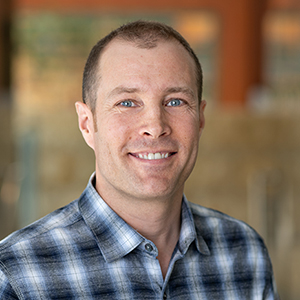On a Friday afternoon in April, seniors at North Community High School in Minneapolis drifted into the auditorium for a mystery assembly. The balloons and DJ suggested something was up.
Every graduating senior left with a $10,000 scholarship. The $1 million effort, spearheaded by a local nonprofit, could be life-changing for some. The gift was undoubtedly a ray of light after some challenging years for the North High student body.

It was a pretty amazing surprise. Still, how might $10,000 for college play out differently if students and parents know all along that this funding is coming their way? Out-of-the-blue scholarships from charities or celebrities are the extreme version of a financial aid fact: Most financial assistance for college comes up very late in the game—especially considering the formative childhood years that come before.
A new working paper from the Opportunity & Inclusive Growth Institute finds that a college subsidy known by parents far in advance—ideally, before the child is born—is especially powerful when it comes to setting up low-income kids for success. Over time, their success can help upend stubborn patterns of inequality that persist across generations (Figure 1).
To reach this conclusion, the economists turn to an extraordinary dataset to disentangle the big and small ways parents shape their children’s economic futures. At the heart of their findings: Parents invest more time, energy, and resources in their children if they expect their kids will go to college. Their life-cycle model suggests that targeting these parental expectations early, with money, can make a large lifetime difference. It dramatically affects whether kids go on to higher education, how well they succeed there, and whom they marry afterward. All of these contribute to a significant increase in lifetime earnings.
Seven Up! for statisticians
The basic notion here—that early education subsidies are better—feels intuitive. But to measure it and to understand why takes rare data. In this case, that dataset is the National Child Development Study (NCDS), an ongoing effort in the United Kingdom to follow the childhood, working life, and retirement of every baby born during one week in 1958 across England, Scotland, and Wales.
“This really is a remarkable dataset,” said University of Cambridge economist Eric French, a former visiting scholar with the Institute. “To the best of my knowledge, it’s the only dataset in the world that tracks the same set of individuals from birth to retirement and actually collects economic information.” French likens it to the hard-data version of the celebrated documentary Seven Up! and its eight (so far) sequels, documenting the lives of the same 14 people as they grow.
The NCDS offers the researchers highly detailed data on the lives of about 9,400 individuals who meet their requirements. Beyond education, employment, family, and income data, the NCDS also records developmental information starting at age 7: standardized test scores, measures of emotional intelligence, and—crucially—a range of survey questions that capture the learning environment at home (Figure 2).
| Father’s education level | |||
| Survey measure (child’s age) | Low | Medium | High |
| Mother reads to child each week (age 7) | 46% | 56% | 67% |
| Father reads to child each week (7) | 33% | 44% | 52% |
| Mother takes child on outings most weeks (11) | 53% | 61% | 59% |
| Father takes child on outings most weeks (11) | 50% | 58% | 56% |
| Mother very interested in child’s education (7, 11, 16)* | 33% | 59% | 76% |
| Father very interested in child’s education (7, 11, 16)* | 23% | 52% | 73% |
| Parental hours with child each week (all ages)** | 8.35 | 8.91 | 9.87 |
These surveys—not just of parents but also teachers, who are asked to give their opinion on the parents’ parenting—allow economists to connect childhood conditions to outcomes in adulthood.
French co-authored the paper, “Intergenerational Altruism and Transfers of Time and Money: A Life Cycle Perspective,” with Uta Bolt, Jamie Hentall MacCuish, and Cormac O’Dea.
“By age 16, we have a pretty good handle on how you’re going to do”
Before exploring education subsidies, the economists use the data to measure just how much of our lifetime earnings can be predicted at early ages (Figure 3). For men, “20 percent of the variability in lifetime income alone is explained just by the characteristics of the parents at the time of birth,” French said. “By age 16, we have a pretty good handle on how you’re going to do over the course of your lifetime—which I think we should consider, in some ways, troubling.” Outcomes for women are less certain through early life, at least for this cohort born in 1958. But they converge with men after marrying (with more education associated with a more lucrative match).
Earnings are closely tied to parental education. Reading and math scores of children of better-educated parents are already much higher when first measured at age 7, and the gap widens over time. Of children whose fathers have some college education, 46 percent went to college themselves, compared with 13 percent of children whose fathers did not have a high school diploma. Lifetime earnings for children of fathers who had some college education are more than one-third greater than those whose fathers did not graduate from high school.
Children of more educated parents also receive more financial support and inheritances from parents. However, the economists find that these are not nearly as important as higher levels of education and the early parental investments that help build skills.
With a different outlook, parents get prepared
When it comes to lifetime earnings, high cognitive skills help. More education also helps. No big news there. But the economists document the extent to which skills and education are even stronger together—a high level of “dynamic complementarity.” High skills (measured in this case at age 16) have a much higher lifetime financial return for kids who go to college. These college returns-to-skill are magnified by the increased likelihood of marrying someone with higher education.
In their model, the economists presume young parents are rational and aware of these facts. If parents do not expect that college is likely for their child, “that’s going to mean that the expected return to all of these parental investments—sending kids to a better school, reading to the kids, making sure the kids get to class on time—the return to all of that is going to be lower,” said French. These investments in childhood development are indeed much lower in the data for parents with less education. But this aligns with the incentives.
A later subsidy or scholarship that suddenly makes higher education feasible cannot make up for years of anticipating a future without college. Some students might now indeed be inspired or enabled to go. But “if they hit college age with low levels of skill,” French said, “they might make it through college, but they might not get a job that makes the best use of their skills.” Sending kids to college who aren’t fully prepared does little to close the intergenerational earnings gap.
Broad education subsidies can also pad the pockets of well-to-do students who would have gone to college anyway. That’s why, in the economists’ model, a late-game boost in college funding for all students, regardless of income, actually makes inequality worse in the subsequent generation.
However, the economists see a far different result in their model when they provide that same substantial college subsidy for all children, with one difference: Parents are aware of it from birth. A preannounced subsidy of 30,000 pounds (about $37,500) more than doubles the number of children going to college. Because lower-income parents are now more likely to send their children to college, they invest more in their children at young ages, imparting the skills to more fully benefit from higher education.
Across all students, the early subsidy raises average lifetime wages by almost 16 percent. Unlike the late subsidy, one that parents know about from birth raises more than enough additional tax revenue over time (through increased earnings) to offset the cost of the aid.
“If it turns out that a kid has an aptitude for academic-type endeavors and they know that they can make it to college, then maybe that kid will invest a little bit more—and those parents will invest a little bit more in the kids,” French said. “If a subsidy is announced and well understood, that makes it much more likely that programs to provide free college actually do promote equality.”
“It’s not that it breaks the cycle” of intergenerational inequality, French said. “But it certainly reduces the persistence in a nontrivial way.”
Setting expectations: “Baby bonds” and free in-state tuition
The findings call to mind a recent crop of state and local policies designed to get new parents saving for and thinking about college right from the start.
In 2022, California joined a small number of states, including Maine and Pennsylvania, in creating and seeding an up-to-$100 college savings account for every newborn. “California is telling our students that we believe they’re college material,” said California Gov. Gavin Newsom, in announcing the CalKIDS program.
In 2020, St. Paul, Minnesota, became the first U.S. city to launch its own such program. CollegeBound Saint Paul provides a $50 deposit at birth, with bonuses available as families meet milestones like participating in early childhood or financial programs offered by nonprofit partners. The notion overlaps with proposals for “baby bonds”—recently enacted in Connecticut and Washington, D.C.—which children could use for various purposes when they turn 18.
French is reserving judgment. To provide parents the maximum incentive, it could be important that the money only be used for higher education, which is not always the case. And there is a reason French and his co-authors modeled a relatively generous subsidy in their paper. “I mean, college is expensive,” he said. “When I went to Berkeley 30 years ago, tuition was $2,000 a year. Since then, it has increased almost tenfold.”
Simply putting new parents in the right frame of mind could have some value. But parents are likely well aware of the daunting expense of college. “All of these little savings accounts,” French said, “could get blown away by those costs.”
A few states have gone further, promising to cover all in-state public college tuition (after exhausting other financial aid) for students from low-income families. These include California, many large universities in Texas, and (starting in 2024) Minnesota, at an annual estimated cost of $50 million. A majority of states now make a similar promise for community college. To the extent that these programs are well publicized and shape parents’ expectation of college-bound kids, French’s research illustrates how they might begin to combat entrenched inequality and even pay for themselves over time by raising the earnings of the next generation.
This article is featured in the Fall 2023 issue of For All, the magazine of the Opportunity & Inclusive Growth Institute
Jeff Horwich is the senior economics writer for the Minneapolis Fed. He has been an economic journalist with public radio, commissioned examiner for the Consumer Financial Protection Bureau, and director of policy and communications for the Minneapolis Public Housing Authority. He received his master’s degree in applied economics from the University of Minnesota.





